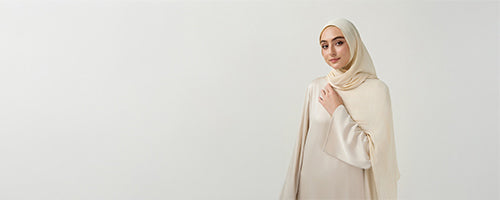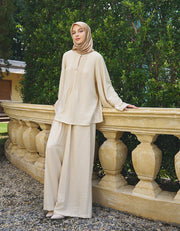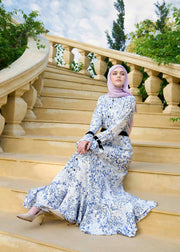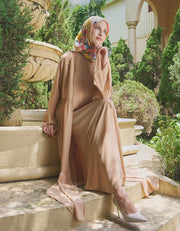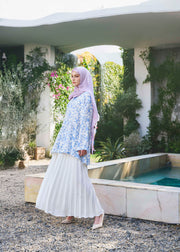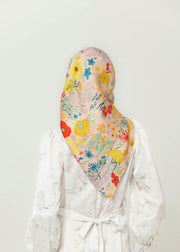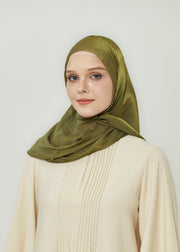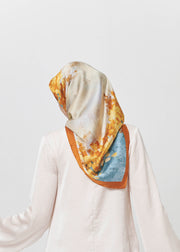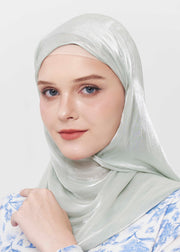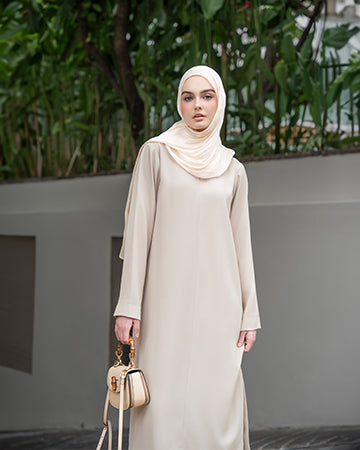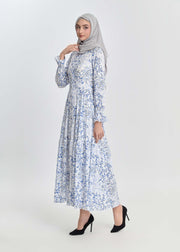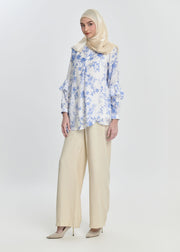Exploring Traditional Islamic Clothing: A Guide to Cultural Modesty
The Essence of Traditional Islamic Clothing
Traditional Islamic clothing is more than just fabric stitched together to cover the body. It reflects values of modesty, cultural identity, and centuries of tradition passed down through generations. For Muslims worldwide, these garments serve both a spiritual and cultural role, symbolizing respect for faith while embracing regional artistry. This guide explores the significance, history, and evolving styles of traditional Islamic clothing, offering insight into why these outfits remain timeless.
The Meaning Behind Traditional Islamic Clothing
At its core, traditional Islamic clothing emphasizes modesty (haya). The Quran encourages both men and women to dress in a way that is respectful and dignified. For women, garments like the abaya, hijab, jilbab, and kaftan embody this principle. For men, thobes and kurtas serve the same purpose. Each piece is not just a fashion choice but also a reminder of faith and devotion.
Cultural Identity in Clothing
Clothing often reveals the identity of a community. Traditional Islamic clothing differs across countries—while Gulf nations favor abayas and thobes, South Asia leans towards salwar kameez and kurtas, and North Africa celebrates kaftans and djellabas. Despite these variations, the underlying principle remains the same: modesty paired with cultural pride.

The Meaning Behind Traditional Islamic Clothing
Key Garments in Traditional Islamic Clothing
The Abaya
The abaya is perhaps the most iconic piece of traditional Islamic clothing for women. Originating in the Arabian Peninsula, this long flowing cloak represents grace and modesty. Modern abayas now incorporate embroidery, subtle colors, and even open-front styles, blending tradition with fashion-forward designs.

The Abaya
The Hijab
A symbol of modesty and privacy, the hijab is more than just a headscarf—it’s an identity marker for Muslim women. Styles vary from simple everyday wraps to luxurious chiffon and silk options for special occasions. The hijab continues to evolve, with designers finding innovative ways to match it with contemporary outfits while staying true to tradition.

The Hijab
The Thobe
For men, the thobe (also known as dishdasha or kandura) is a staple. Its clean, ankle-length design provides comfort in hot climates while symbolizing cultural continuity. Variations in color, fabric, and tailoring distinguish regional styles, but the thobe remains a constant in traditional Islamic fashion.

The Thobe
The Kaftan
The kaftan, popular in North Africa and the Middle East, combines elegance with modesty. Worn by both men and women, it often features intricate embroidery and luxurious fabrics, making it a favorite choice for celebrations and weddings.
Evolution of Traditional Islamic Clothing
While rooted in centuries-old customs, traditional Islamic clothing has adapted to modern lifestyles. Designers are now merging modesty with contemporary fashion, offering pieces that appeal to younger generations. From urban streetwear-inspired abayas to breathable fabrics for hot climates, Islamic clothing demonstrates how tradition can harmonize with modernity.
Influence of Global Fashion
Global fashion trends have also shaped how traditional Islamic clothing is styled. Today, Muslim designers showcase collections at international fashion weeks, proving that modest fashion is not only culturally significant but also commercially relevant. This evolution ensures that traditional Islamic clothing remains visible, respected, and celebrated worldwide.
Why Traditional Islamic Clothing Matters Today
In an increasingly globalized world, traditional clothing helps preserve cultural roots. Wearing these garments is an act of identity affirmation, allowing Muslims to remain connected to their heritage. Additionally, modest fashion is gaining popularity beyond Islamic contexts, with many women around the world appreciating the balance of elegance and coverage it offers.
Styling Traditional Islamic Clothing for Modern Lifestyles
-
Mixing fabrics: Pairing cotton abayas with silk scarves for comfort and elegance.
-
Color palettes: Moving beyond black to explore pastels, neutrals, and jewel tones.
-
Layering techniques: Styling kaftans or tunics with modest vests and coats.
-
Occasion-specific choices: Opting for simple thobes for daily wear and embroidered kaftans for formal gatherings.
These approaches highlight the adaptability of traditional Islamic clothing, ensuring its relevance across generations.
Conclusion: Honoring Tradition While Embracing Style
Traditional Islamic clothing is more than attire—it is a cultural narrative, a spiritual expression, and a bridge between the past and the present. As it continues to evolve, it stands as a testament to the beauty of modesty and heritage. Whether it’s the flowing abaya, the dignified thobe, or the elegant kaftan, these garments embody values that never fade.
For those seeking modern interpretations of traditional Islamic clothing that respect faith while embracing style, explore the latest collections at Minnaba—where tradition meets contemporary modest fashion.

